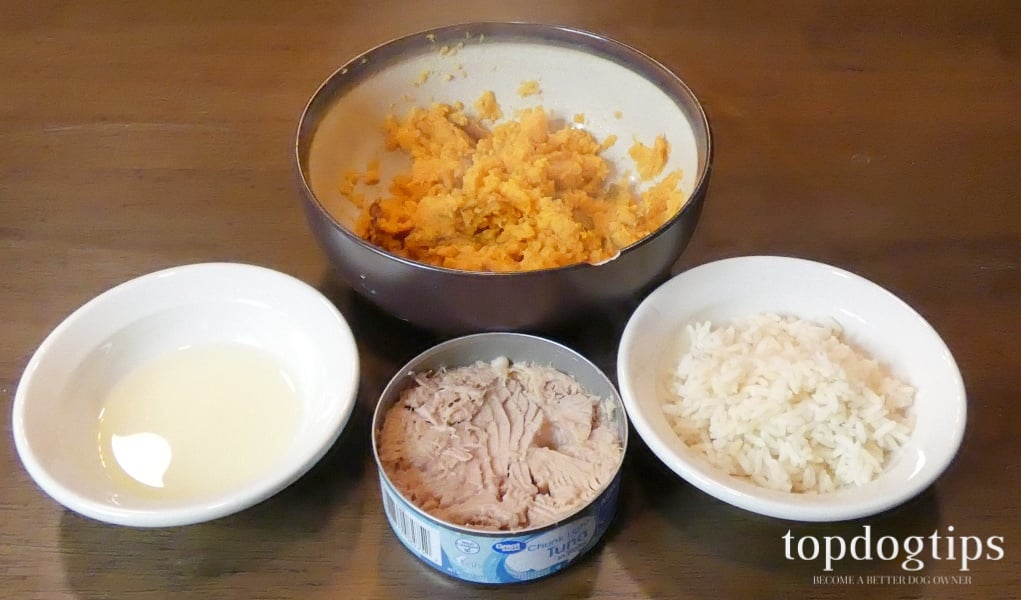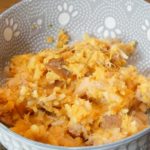Preparing homemade food for your pet is the only way to create a diet that is customized to his exact nutritional needs. Unfortunately, most of the homemade cat food recipes that you will find in books or online are not nutritionally balanced for your pet. This balanced homemade cat food may meet the needs of some cats, but it won't be suitable for every feline.
Tuna is high in protein and low in carbohydrates. It provides the omega-3 essential fatty acids eicosapentaenoic acid (EPA) and docosahexaenoic acid (DHA), which can contribute to overall skin and coat health. These fatty acids also help improve inflammatory conditions like heart disease, arthritis, kidney disease and certain cancers.
Keep in mind that Tuna is high in Vitamin E and only contains small levels of mercury. In moderation, tuna is perfectly healthy to include in your cat's meals. However, it should not be fed daily. In short, this balanced homemade cat food with tuna be part of your cat's diet, but not the only food that you feed him.
Balanced Homemade Cat Food with Tuna
Like anything else, there are pros and cons when it comes to making homemade cat food. A homemade cat food recipe uses fresh, human-grade ingredients. You can even include some superfoods that can offer major boosts to your cat's overall health and well-being.
While it can offer some great health benefits, it can also be extremely dangerous to feed your pet a homemade diet if you do not know what you are doing. It's not enough to just look up recipes on the internet. This may come as a surprise, but you cannot trust everything you read online.
Sadly, a recent study published in the Journal of the American Veterinary Medical Association proves that recipes created for felines are not usually nutritionally balanced. They selected 114 recipes from different online sources and books. Of these recipes, NONE of them provided all the essential nutrients to meet the National Research Council’s recommended allowances for adult cats.
Only 94 of the recipes provided enough information for an accurate nutritional analysis. 40% of them didn't include feeding instructions, and 7% of the recipes called for ingredients that are toxic to cats!
This research proves that it is imperative to speak with your veterinarian before switching your cat to a homemade diet. The following recipe will NOT provide balanced nutrition for every cat, but your veterinarian can help you choose supplements or a multi-vitamin that will help to fill the gaps.
Recipe: Balanced Homemade Cat Food with Tuna
If your veterinarian has approved this recipe, you can make it fresh daily or prepare a large batch to freeze. Feeding your cat a homemade diet is more work than opening a can of store-bought cat food, but it's worth the additional time and effort.
- Prep Time: 5 minutes
- Cook Time: 30 minutes
- Total Time: 35 minutes
- Yield: about 1 cup of food 1x
- Category: Cooked Food
- Method: Stovetop
- Cuisine: Cat Food
Ingredients
- 10 ounces tuna
- 1/3 cup cooked white rice
- 1/4 cup cooked mashed sweet potato
- 1/4 tsp. fish oil
Instructions
This recipe makes one days food for the average 12-pound adult cat. It should be split into 2 meals.
Cook the rice according to the instructions on the packaging. Boil or bake the sweet potato until it is soft enough to mash.
Combine all of the ingredients in a mixing bowl and stir until well blended. Once the rice and potato have cooled, you can feed this meal to your pet.
Nutrition
- Serving Size: 1/2 cup
- Calories: 266
- Sugar: 1.1 g
- Sodium: 54 mg
- Fat: 7.8 g
- Carbohydrates: 19.9 g
- Fiber: .8 g
- Protein: 26.9 g
- Cholesterol: 29 mg
How much to feed: I recommend feeding about 1/3-1/2 cup of food daily. This recommendation is for 2 servings per day. This is just a guideline. Typically cats do not overeat, but some cats do. Your cat may not overeat dry kibble, but the enticing whole food ingredients of homemade food may cause him to eat more than he should.
How to store: You can store the leftover cat food recipe in an airtight container in the refrigerator for 3-5 days or freeze it in an airtight container for storage of up to 3 months. Keep in mind that this recipe includes no preservatives, so it won't last nearly as long as commercial cat food.















